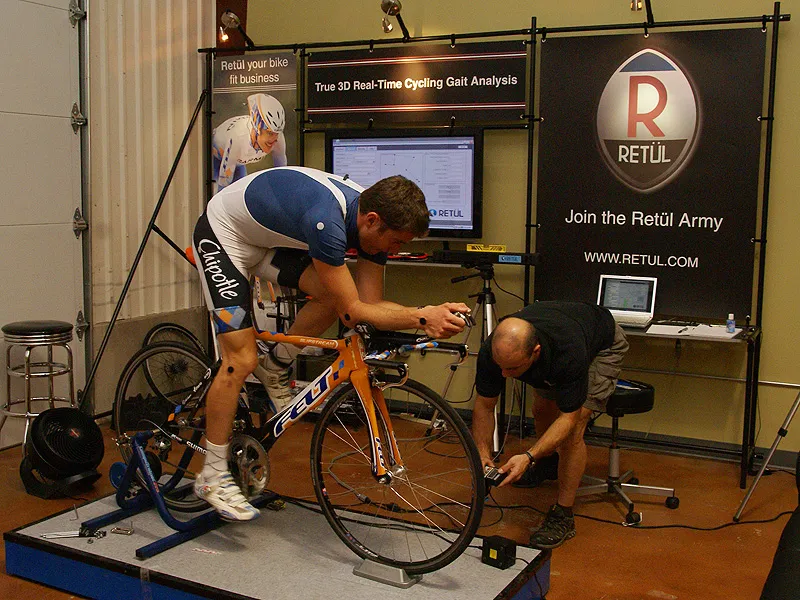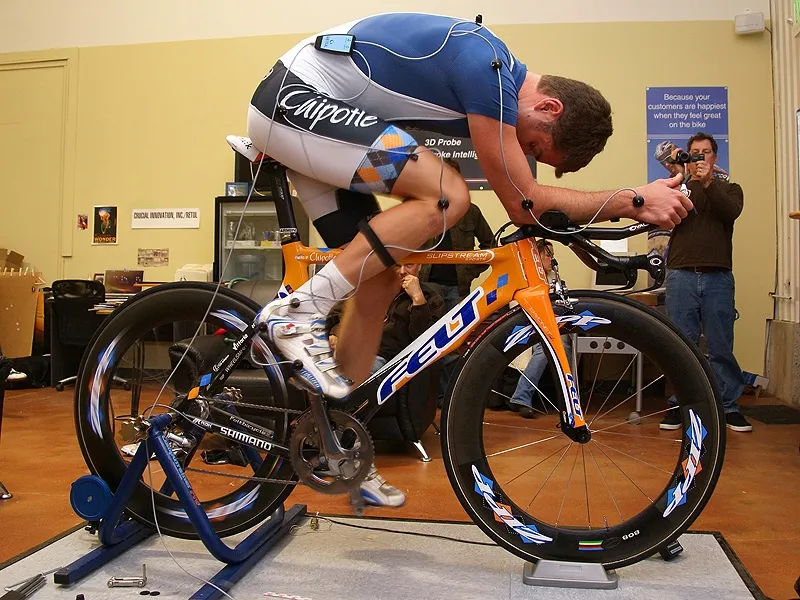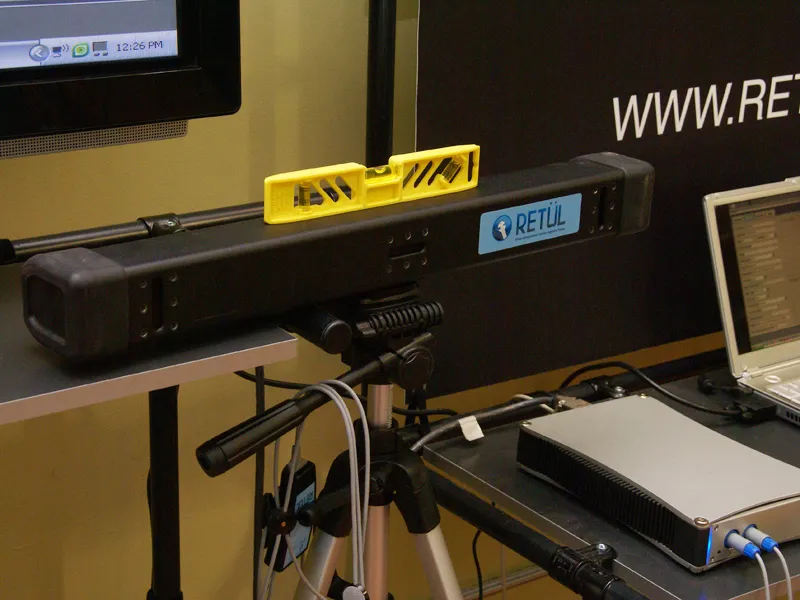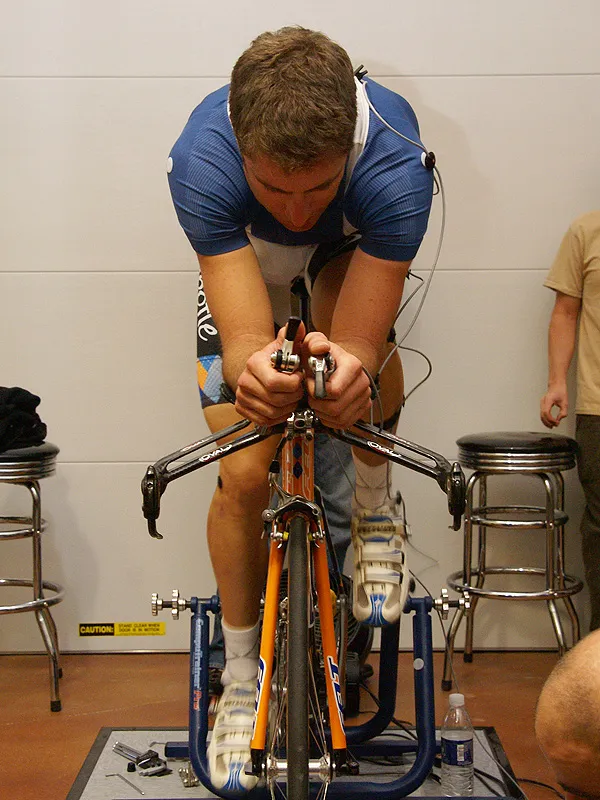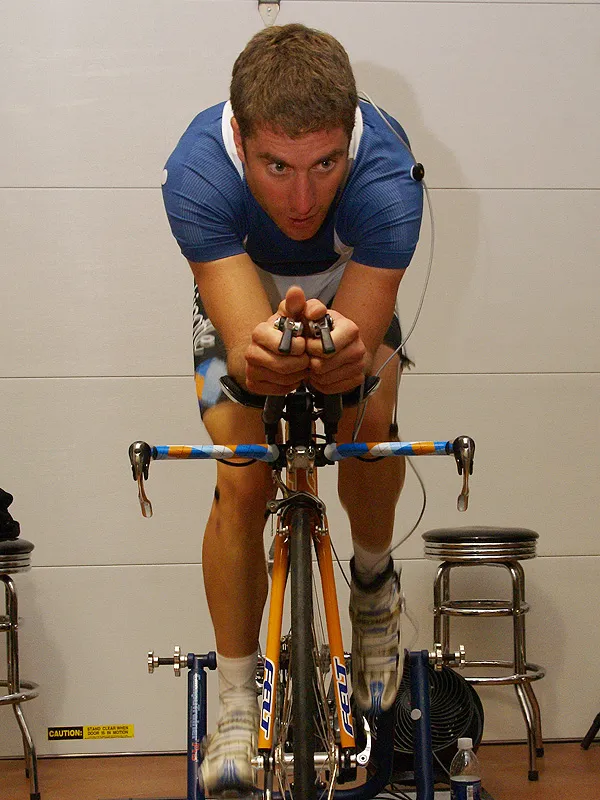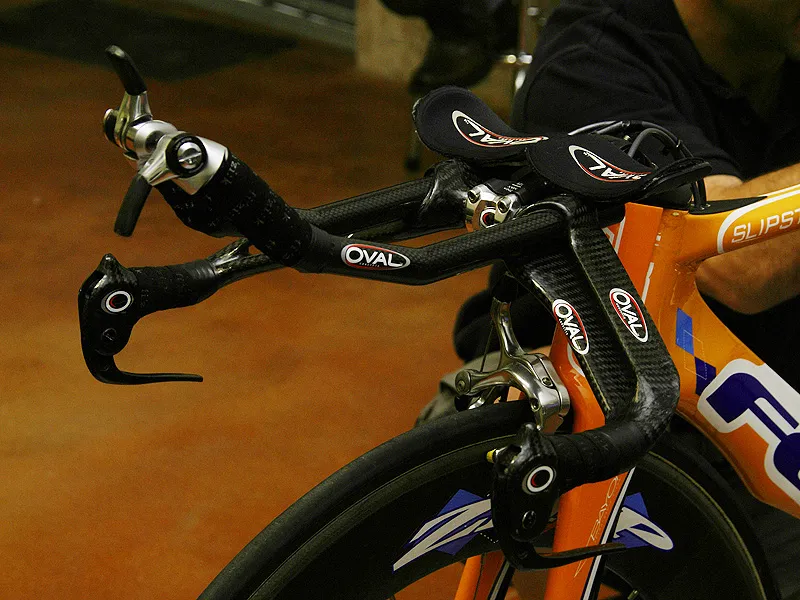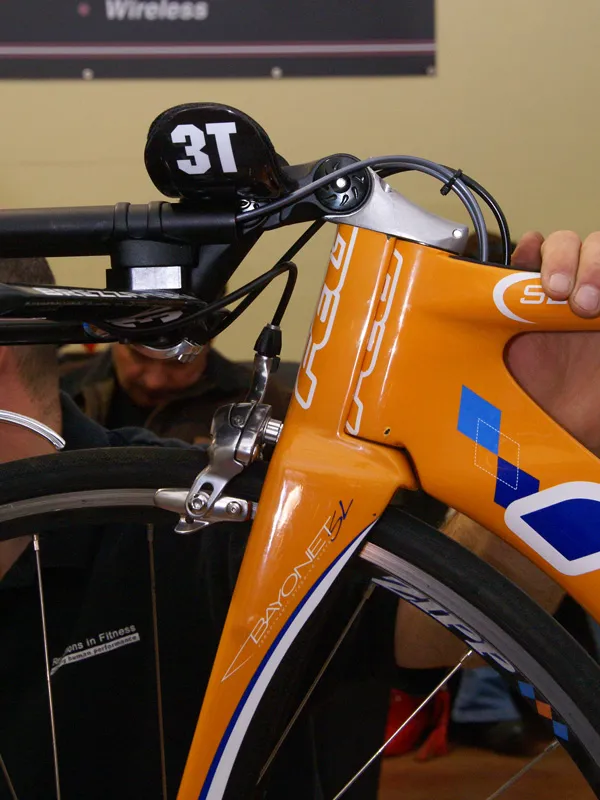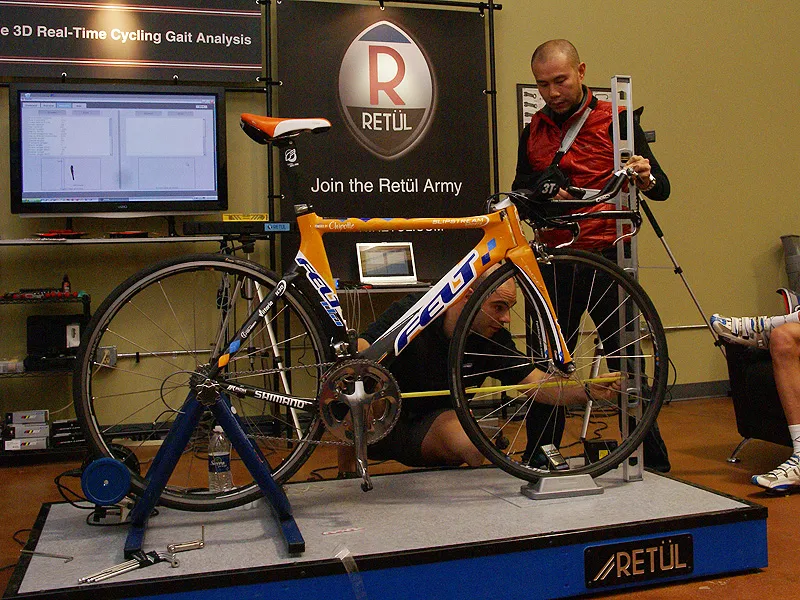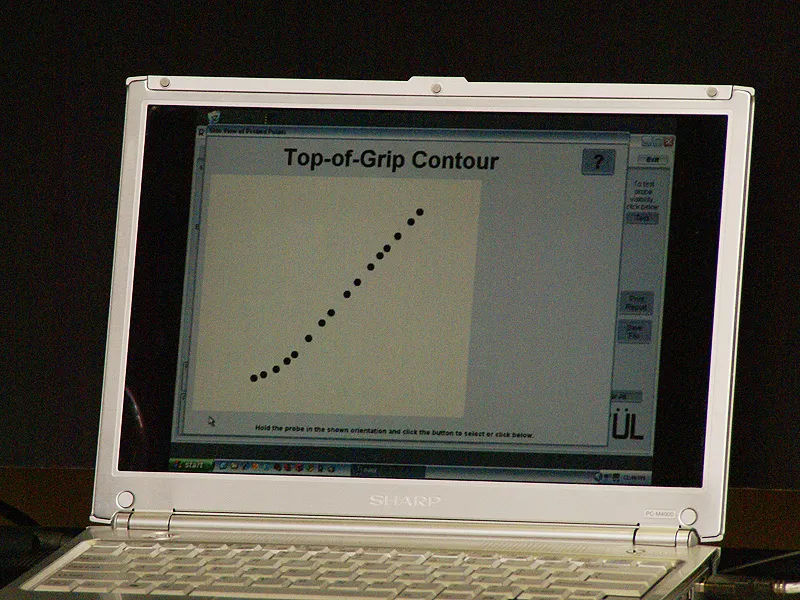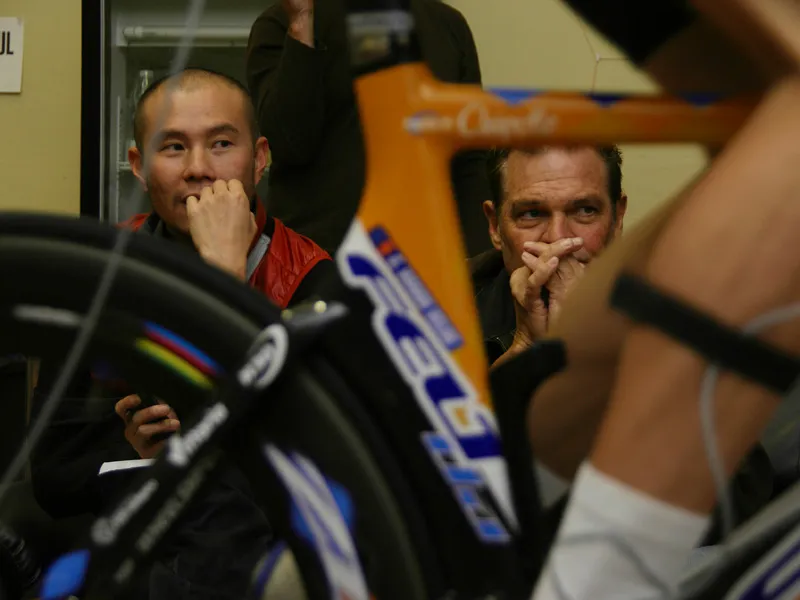Changes in sponsorship mean that many pro teams have a lot of work to do in the off-season. Team Garmin-Chipotle, on the other hand, are heading into 2009 with most of the same gear, so instead of having to get bikes and components adjusted for each rider, they can spend time refining existing setups.
One notable exception is bars and stems, as the team are switching sponsorship from Oval Concepts to 3T. While getting the road bikes set up should be fairly straightforward, the brands’ aero bars are vastly different in shape so care will be required in setting up the time trial machines, especially for team leader Christian Vandevelde, who has a history of back and hip problems.
Retül me up
Vandevelde and his teammates used returning sponsor Retül’s 3D motion and spatial capture system to fine-tune their body positions last year. A new widget dubbed ‘The Zin’ now allows for precise analysis of their bikes as well.
To use the Retül system, riders must don a harness which has active LED markers at key points on the body such as knee, ankle and hip. The athlete is set up on a stationary trainer, a standalone sensor array records each marker position 30 times per second (to a claimed resolution of just 1mm in any direction) and the information is then analysed with Retül software.
The Zin, on the other hand, is essentially a single LED emitter on a stick. You place the end on a spot of interest and tell the system to record its location. It is capable of recording everything from hub centres and handlebar width to lever hood contours and saddle surfaces. In less than 10 minutes it can produce a computerised bicycle model containing all the important setup information.
Lessons learned
It turns out that the aero bar swap will be anything but a mere plug-and-play operation. Vandevelde’s new 3T Brezza setup uses a level base bar while his old Oval Concepts A911 JetStream has 80mm of drop. The Oval base bar grips are also substantially further forward. Team mechanics will have to use a stack of spacers to recreate the height difference between the base bar grips and aero extensions, and the stem clamp position will have to be lower and further back. Complicating matters is Vandevelde’s extreme amount of handlebar drop relative to his saddle height and his Felt DA’s integrated Bayonet front end.
As a temporary solution, Felt inserted an extra segment into the DA’s articulated stem so the team could make use of their limited – and pricey – wind tunnel time, but the Heath Robinson/Rube Goldberg-like contraption is less than ideal. Ultimately, Vandevelde – and others in his situation – will require custom stems and Felt may even have to modify the upper portion of their Bayonet fork system.
The Retül system also revealed that Vandevelde’s slight lower body asymmetries put more pressure on one side of his saddle than the other, resulting in different rates of wear and compression. Most riders would never notice such a difference but it can have significant effects on power output and long-term comfort for a rider of Vandevelde’s calibre.
The solution? Vandevelde will have to replace his Fi’zi:k saddle unusually frequently – perhaps even once a month – in order to maintain a constant position for that critical contact point. With the help of Retül’s new Zin tool, though, team mechanics will at least be able to make sure that each replacement is exactly where it’s supposed to be.
